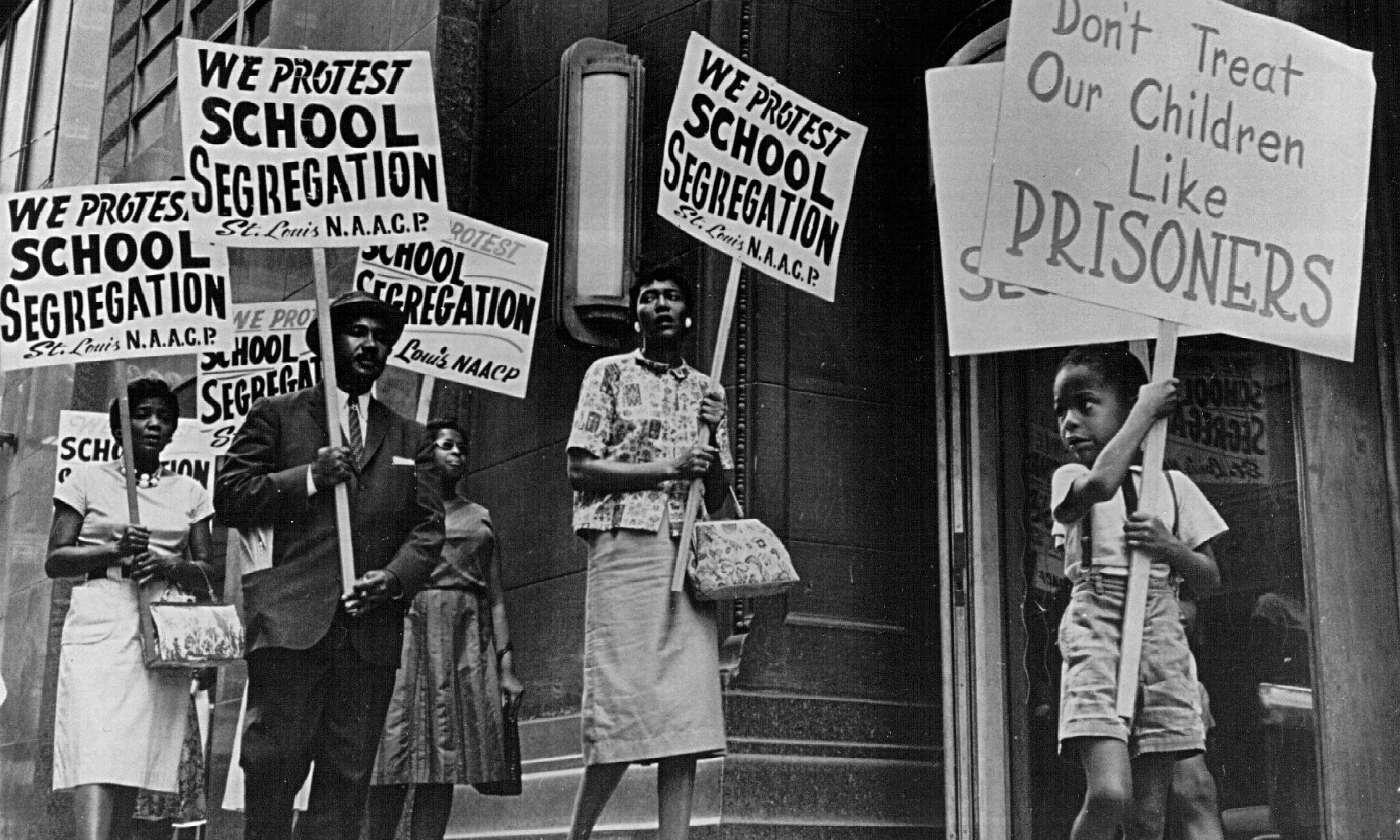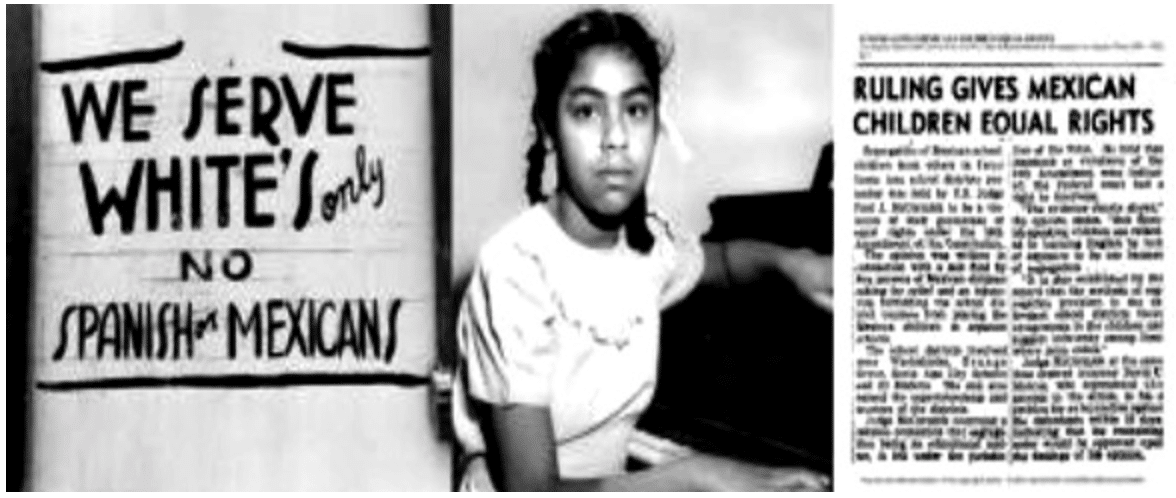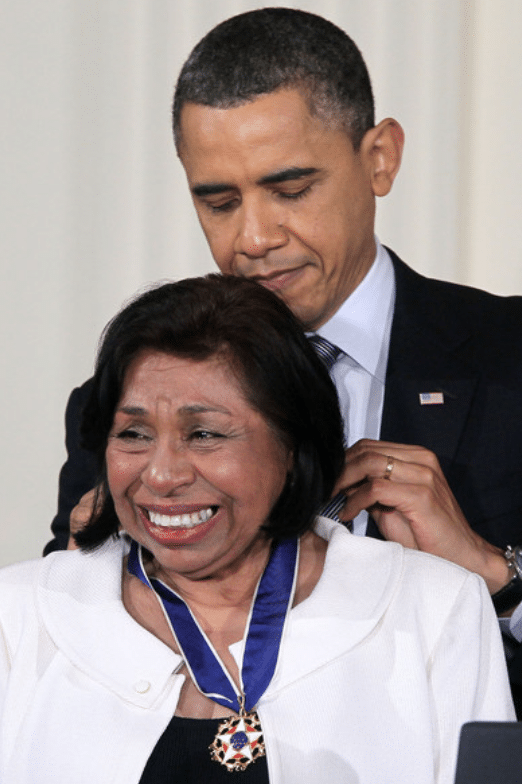Google Doodle Honors Felicitas Mendez, Puerto Rican Civil Rights Figure Who Helped End School Segregation in the U.S.
To kick off Hispanic Heritage Month, Google featured Puerto Rican Civil Rights pioneer Felicitas Mendez as today’s Google Doodle. Here’s why it’s important:
Felicitas Mendez left her mark on American history after suing the school district in California that denied her children from enrolling in classes. This precedent helped end segregation in California and the United States seven years later.
Felicitas was born Felicitas Gomez Martinez on February 5, 1916 in Juncos, Puerto Rico. During her preteen years, she moved with her family to the United States where she eventually settled in California’s Orange County. In 1935, she married Mexican immigrant and naturalized American citizen Gonzalo Mendez, a fellow farm worker who worked alongside her family. The couple opened a neighborhood cafe named La Prieta and managed their land in small-town Westminster.

The couple had three children, Sylvia, Gonzalo Jr. and Jerome Mendez who all attended Hoover Elementary.
This school, in the middle of a small Mexican neighborhood, was designated for Mexicans only and those with a Spanish surname.
Felicitas’s daughter, Silvia Mendez, recalled the school had desks and books that were falling apart, as well as flies everywhere, and an electric fence separating the school from a cow pasture.
However, the cleaner all-whites school, 17th Street Elementary, was located only a mile away. The issue was, California school districts implemented a very strict segregation regulation between Latinos and whites in schools.
Regardless of segregation laws, Felicitas and her husband Gonzalo wanted to enroll their children at 17th Street Elementary but were denied because their children were of Mexican-Puerto Rican descent and had brown skin.
Felicitas’ nieces and nephews, who were lighter skinned and had the last name Vidaurri (a French surname), were accepted into 17th Street Elementary. Viduarri demanded both her own children and the Mendez children be accepted altogether; however, 17th Elementary did not budge.
Unwilling to accept this injustice and racist discrimination, Felicitas and Gonzalo became determined to change this and they geared up to create permanent change.

Their organizational efforts were met with obstacles and little support at first. However, on March 2, 1945, the couple was able to obtain four other Mexican parents to file a prominent lawsuit against the county and school district demanding the end of segregated schools between Latinos and white students. Meanwhile, Felicitas worked diligently to manage the Mendez farm in order to bring in profits to help subsidize the lawsuit.
The school representatives argued Mexican children were segregated from white children deeming their Spanish-speaking and “Latinidad” as something inferior to white children and therefore necessary to separate Mexican children. They also added that they “had hygiene deficiencies, like lice, impetigo, tuberculosis, and generally dirty hands, neck, face and ears,” which is why they needed to be segregated.
The Jewish attorney representing the Mendez family, David Marcus, argued that the segregation was a violation of the equal protection law clause of the Fourteenth Amendment which prohibits states from denying “any person within its jurisdiction the equal protection of the laws.”

On February 18, 1946, Judge Paul J. McCormick of the federal district court ruled in favor of the Mendez family. However, the school district appealed.
Some Orange County schools started to desegregate while other schools refused.
Still, other schools forced Mexican students to continually take IQ tests to justify segregation and educational inferiority.
Several organizations like the ACLU, American Jewish Congress, Japanese American Citizens League, NAACP, and the famous Thurgood Marshall wrote an amicus curiae to the court in support of the Mendez family fighting for cultural equality.
Sylvia Mendez recalled what her mother told her the day she came home crying from her first day at an all-white school:
“Don’t you know what we were fighting? We weren’t fighting so you could go to that beautiful white school. We were fighting because you’re equal to that white boy,” said Felicitas.
quote via Los Angeles Times
A year later, the Ninth Circuit Court of Appeals affirmed the ruling in favor of the Mendez and other Mexican families.
Due to the upholding by the federal court, California Governor Earl Warren signed legislation making California the first state to desegregate schools.
Seven years later, this same ruling was what provided attorney Thurgood Marshall the grounds in the historical Brown v. Board of Education which ruled segregation in schools unconstitutional nationwide.
The Mendez family created a legacy that spread throughout California and the nation.

On September 9, 2009, a local school in Boyle Heights opened the “Felicitas and Gonzalo Mendez Learning Center.” Mendez’s daughter, Sylvia Mendez, was given the Presidential Medal of Freedom by President Obama.
Sylvia Mendez, recalled her pride in her mother’s legacy saying,
“No one knows about Mendez vs. Westminster, how five families fought to end segregation in California. When we all decided to fight, it was not only for you but for all the children. It was that day that I promised my mother I would make sure everyone knew about the fight and Mendez vs Westminster. It became my legacy!”
quote via Google
While this did not end racism, inequality, or other forms of segregation in this country, without women like Felicitas, we wouldn’t be here today one step closer to change. Gracias Felicitas!




